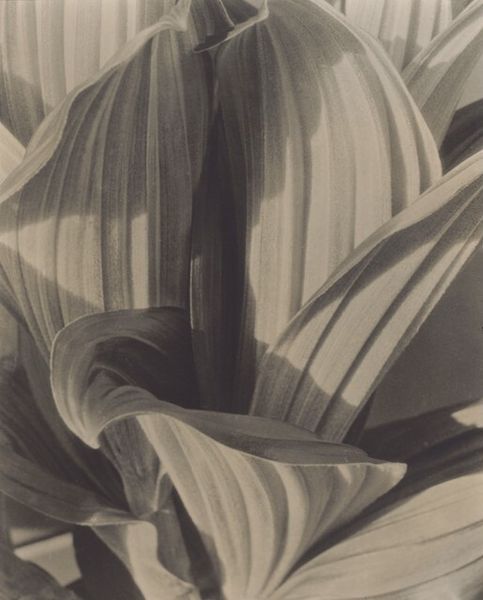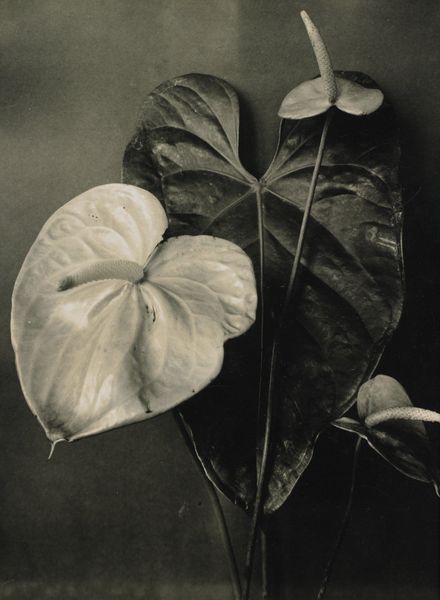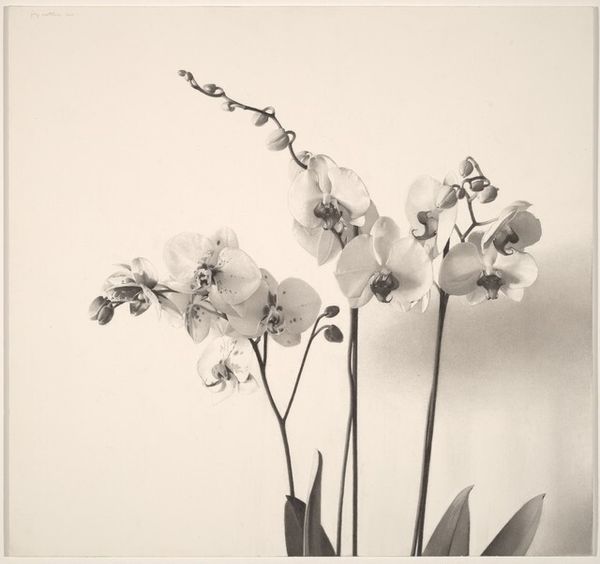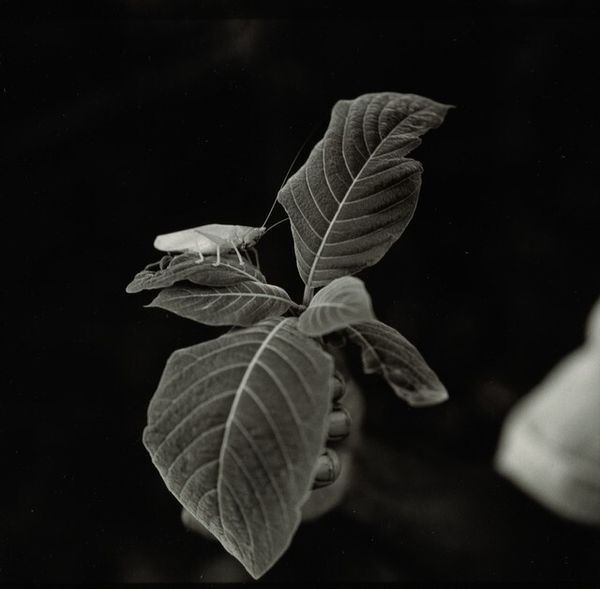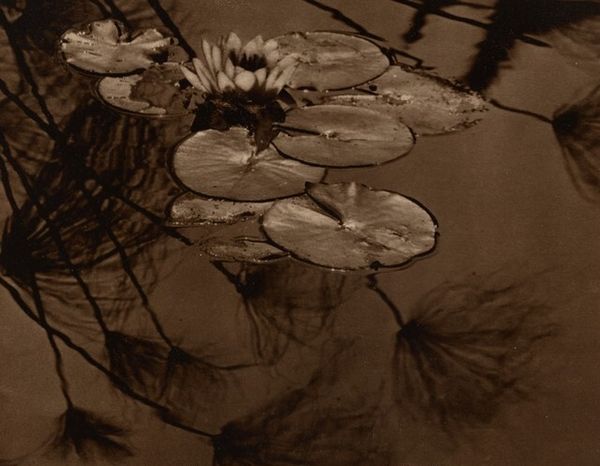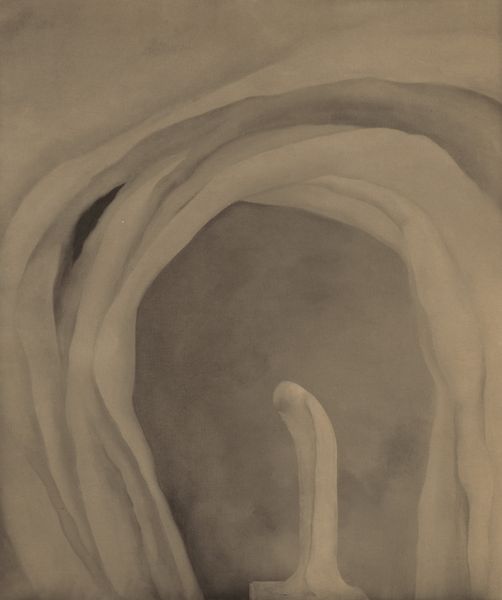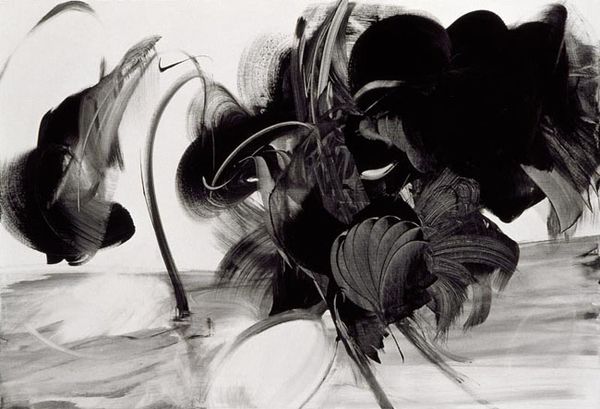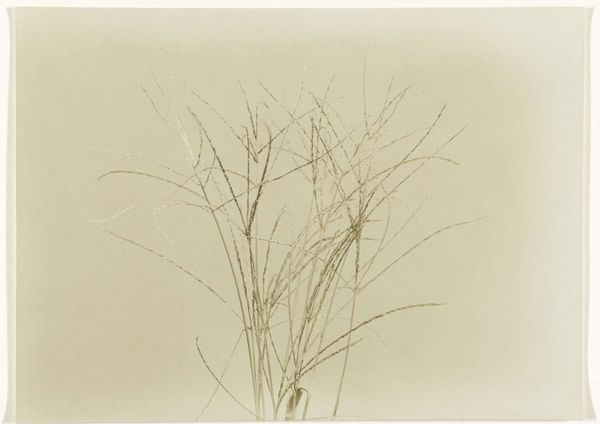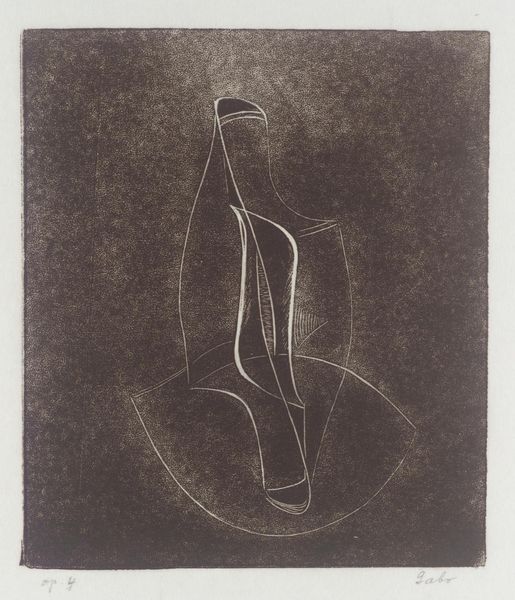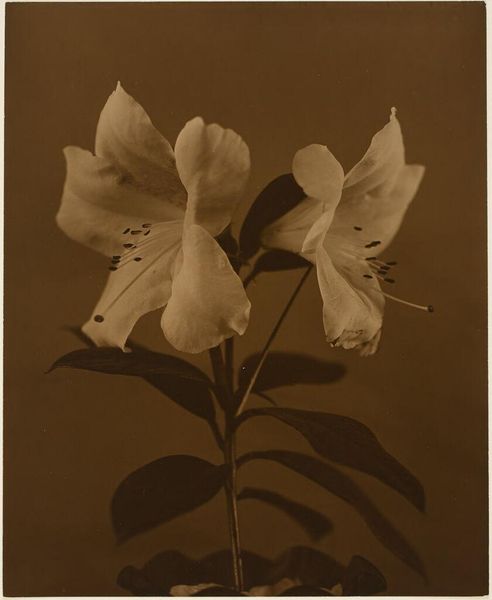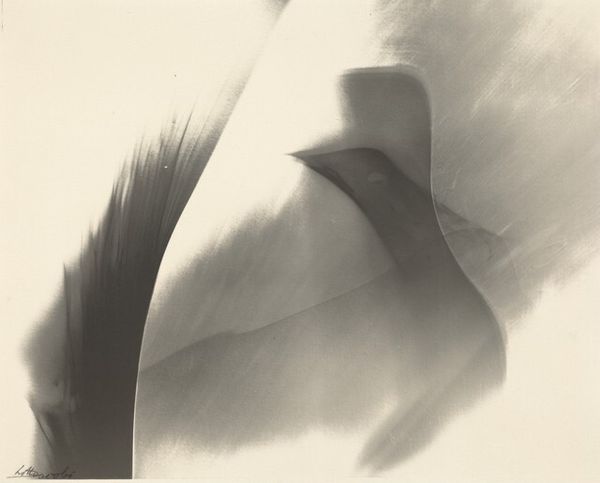![Ohne Titel (Anthurium) (Untitled [Anthurium]) by Aenne Biermann](/_next/image?url=https%3A%2F%2Fd2w8kbdekdi1gv.cloudfront.net%2FeyJidWNrZXQiOiAiYXJ0ZXJhLWltYWdlcy1idWNrZXQiLCAia2V5IjogImFydHdvcmtzLzc2MTFiZTlmLTQ0Y2YtNDFiYS04MTgwLTRjMWVkODJhZTIyZi83NjExYmU5Zi00NGNmLTQxYmEtODE4MC00YzFlZDgyYWUyMmZfZnVsbC5qcGciLCAiZWRpdHMiOiB7InJlc2l6ZSI6IHsid2lkdGgiOiAxOTIwLCAiaGVpZ2h0IjogMTkyMCwgImZpdCI6ICJpbnNpZGUifX19&w=1920&q=75)
photography
#
natural shape and form
#
sculpture
#
photography
#
geometric
#
naturalism
Dimensions: image: 37.7 × 48.6 cm (14 13/16 × 19 1/8 in.)
Copyright: National Gallery of Art: CC0 1.0
Curator: Aenne Biermann's "Ohne Titel (Anthurium)", created in 1927, is a striking example of New Objectivity in photography. What strikes you most when you first look at this piece? Editor: Immediately, I’m captivated by its almost sensual form. The dark background throws the texture and curves of the Anthurium into sharp relief, making it feel incredibly intimate. There's a quiet intensity here. Curator: Biermann was deeply involved with the New Objectivity movement, which advocated for a return to realism after the more expressive, painterly styles of the early 20th century. The movement had profound implications for photographic practices, emphasizing precision and the beauty inherent in ordinary subjects. Editor: And I think it powerfully captures that idea. In its botanical precision, I'm reminded of queer or feminist artists later using floral imagery to disrupt notions of traditional representation, turning something seemingly passive into a symbol of strength. I imagine Biermann using naturalism to reflect an idealized view of modern woman. Curator: That's a fascinating reading. Indeed, the "Neue Sachlichkeit," as it was known in Germany, had significant social implications. It encouraged artists to engage directly with the world around them, documenting both its beauty and its harsh realities. Art served as both historical record, but it also was a means to elevate mundane themes as part of the avant-garde program. Biermann used her camera to focus our attention to subjects typically relegated to secondary importance. Editor: It’s such a carefully composed image. The play of light and shadow enhances the plant's form. Its stark beauty prompts me to reconsider what's worthy of our gaze, suggesting even within industrial landscapes, beauty exists—insisting we actively look for it. Curator: I agree entirely. "Ohne Titel (Anthurium)" reminds us to look closer, and reconsider the power of photographic images in mediating our perception of nature. Editor: Ultimately, it's a work that transcends its era, offering an ongoing discourse between nature, representation, and identity. Curator: An interesting photograph of the natural world seen through the lens of early twentieth century modernist thought.
Comments
No comments
Be the first to comment and join the conversation on the ultimate creative platform.
